How To Get Rid of Bad Puppy Breath? [5 Ways]
Dental care is an essential part of your responsibilities as a pet owner. Like humans, dogs can develop dental disease, tooth decay, and other issues.
Bad breath is often the first symptom you’ll notice. While some degree of puppy breath is normal, taking steps to prevent bad dog breath will improve your pet’s overall dental health and can prevent more serious issues.
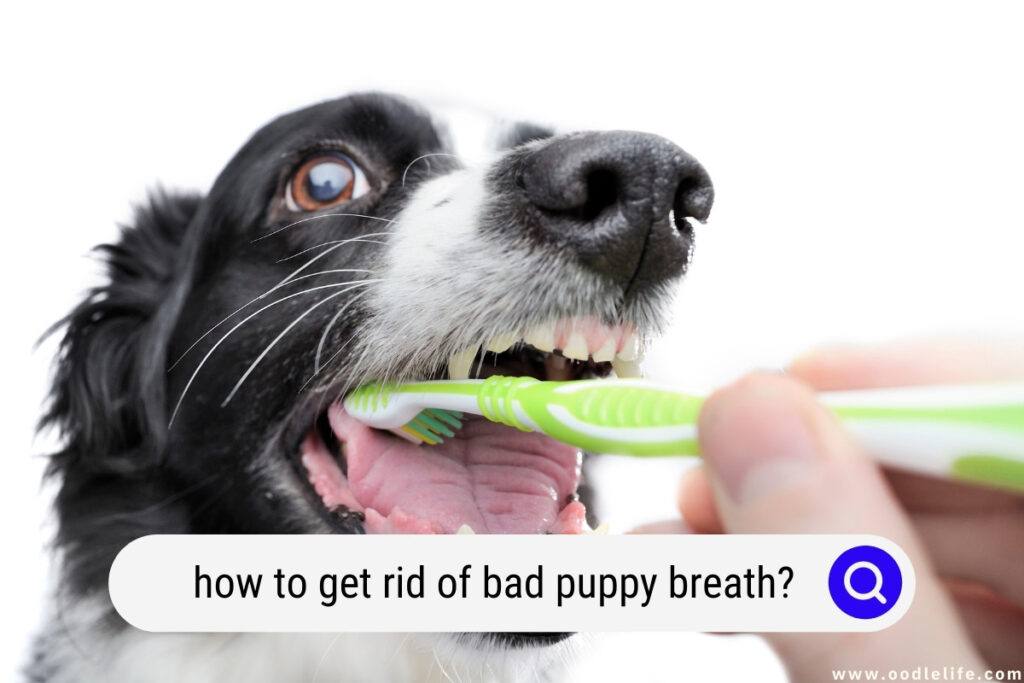
Read on to learn more about how to get rid of puppy breath and improve your pet’s oral hygiene!
What Causes Puppy Breath?
Puppy breath is the result of bacteria in your dog’s mouth. Bacteria can build up when food debris accumulates and form dental plaque, a substance that forms when saliva binds food particles to the teeth.
Plaque is a breeding ground for bacteria, which means the condition will worsen over time. It can also spread to your pet’s gum as bacteria cause periodontal disease to appear.
Small breeds are more likely to develop this condition since small teeth can trap more food particles. Even with an active dental care routine, periodontal disease is hard to prevent since 80% of dogs over the age of three develop this condition.
The good news is that you can prevent or manage this condition and reduce the presence of bacteria and bad breath with an oral hygiene routine.
Bad breath can also result from dental issues such as an infection or tooth decay. Advanced periodontal disease can cause bacteria to damage the enamel of the teeth, resulting in tooth decay. An infection can appear as tooth decay progresses, but it can also result from broken or damaged teeth.
While plaque and periodontal disease are common causes of bad breath in dogs, there are other possibilities:
- Your pet’s diet can affect the way their breath smells. An allergy or food intolerance could result in a gut bacteria imbalance that leads to bad breath.
- Switching to soft food can also cause your pet to develop bad breath.
- Does your puppy like to get in the garbage? A dog can develop bad breath after eating something unhygienic
- Licking is how dogs stay clean. You might notice that your puppy has bad breath after licking themselves. But the bad breath will typically go away after a while.
- In rare cases, bad breath can indicate a medical issue like diabetes, liver disease, or kidney disease.
- If you notice bad breath accompanied by lethargy and other worrisome symptoms, it’s best to schedule an appointment with your vet.

How To Get Rid of Puppy Breath?
There are different ways of eliminating bad puppy breath. Discuss these options with your vet to determine the best approach to improving your pooch’s oral hygiene.
Brush Your Dog’s Teeth
Daily brushing can go a long way in reducing the formation of plaque. Brushing will remove food debris before plaque appears. It can also eliminate bacteria.
However, teeth brushing is slightly different for dogs. Don’t use regular toothpaste since many products contain xylitol, which is extremely toxic to dogs.
Use an enzymatic toothpaste made for animals instead. Enzymatic toothpaste typically contains antibacterial ingredients and can break down plaque. The best way to brush your puppy’s teeth is to use a small finger toothbrush, but you can also use a baby toothbrush.
Getting your puppy used to the toothbrush can be tricky. A good way to get started is to simply place the toothbrush in your pet’s mouth with a small quantity of toothpaste and wait a few seconds.
Reward your puppy so that they associate the toothbrush with something positive and get used to the taste of the toothpaste. After a few days, start brushing gently and reward your pet. Increase the time you spend brushing gradually and don’t worry about doing a thorough job until your puppy is comfortable with this new grooming routine.
If you struggle with getting your dog used to brushing, you can try dental wipes instead. You can use this product to wipe food debris and bacteria from the surface of your dog’s teeth, and the sensation might be less unpleasant than brushing.
Ideally, you should brush or wipe your puppy’s teeth every day. Oral hygiene becomes more important as your pet gets older and becomes more likely to develop plaque, but it can’t hurt to adopt good dental hygiene practices early.
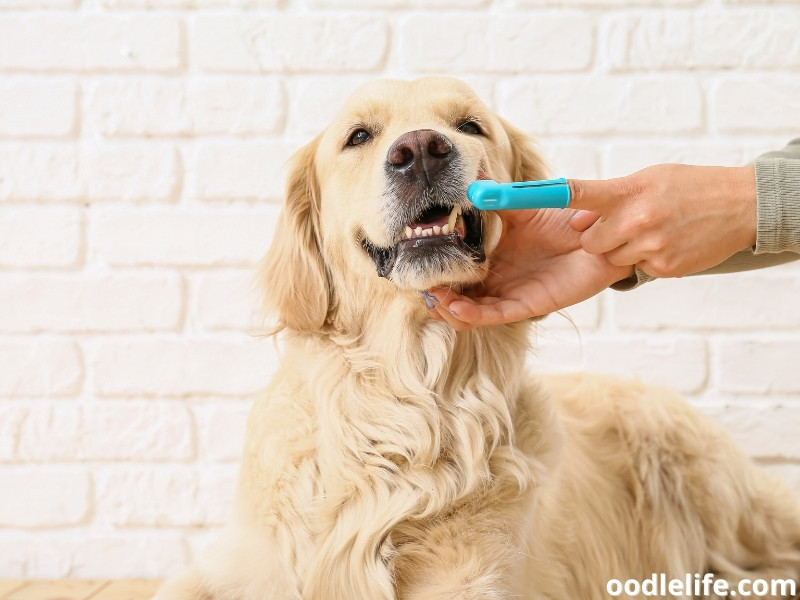
Offer Dental Chews
Dental chews are a great way to prevent plaque buildup and freshen your pet’s breath. These products include ingredients like surfactants or starch to break down plaque as well as chlorophyll to cover bad breath.
The shape and texture of these treats also promote chewing and can remove food debris as your dog gnaws on the treat. Plus, it’s a part of the oral hygiene routine that your pup will genuinely enjoy!
However, you should know that not all dental chews have the same ingredients. Check reviews or talk to your vet to choose a quality product and consider combining dental chews with brushing for a more comprehensive routine.
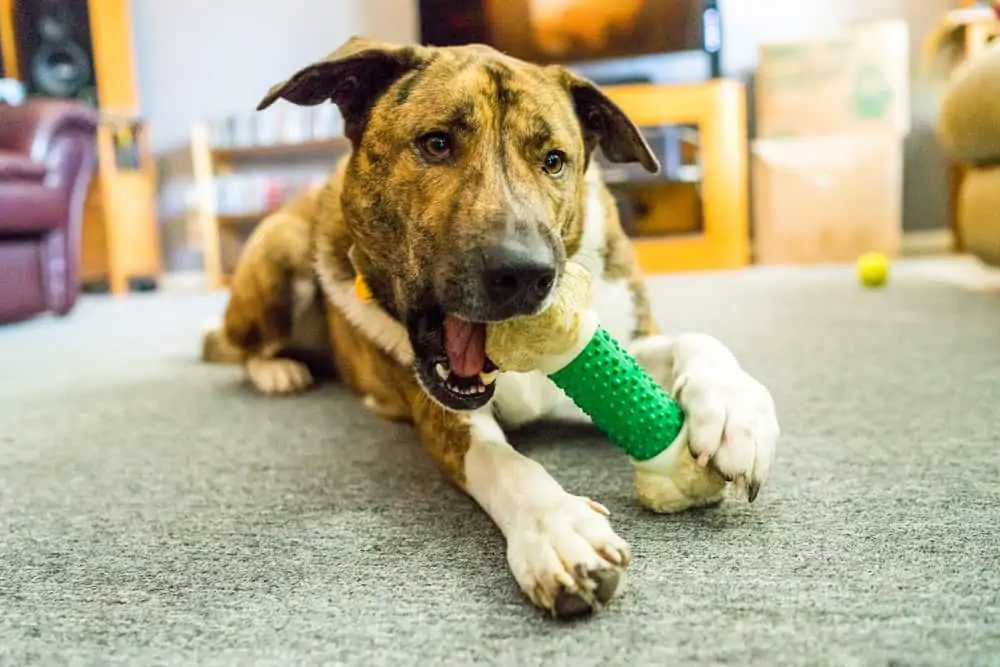
Encourage Chewing With a Variety of Toys and Treats
Chewing is important, especially for puppies. Chewing promotes a strong and healthy jaw and supports dental health. Plus, it’s a good way to relieve stress and boredom.
Plus, toys and treats can help clean your dog’s teeth by catching food debris.
Offer toys and treats that encourage chewing as part of your dog’s oral hygiene routine. There is a wide range of chew toys to choose from, but you need to find options adapted to your dog’s size and age.
Hard toys like bones, antlers, hooves, or even nylon bones can splinter and cause broken teeth, especially in small breeds and older pets.
It’s best to stick to safe chew toys, such as quality rawhide and rubber toys. Offer different sizes, shapes, textures, and even scents to encourage your dog to interact with these toys.
You can also encourage chewing by offering crunchy treats that will catch food debris, such as pieces of raw carrots and apples.
Chewing is great for promoting strong teeth and managing puppy breath, but it’s not as effective as brushing for preventing and removing plaque.
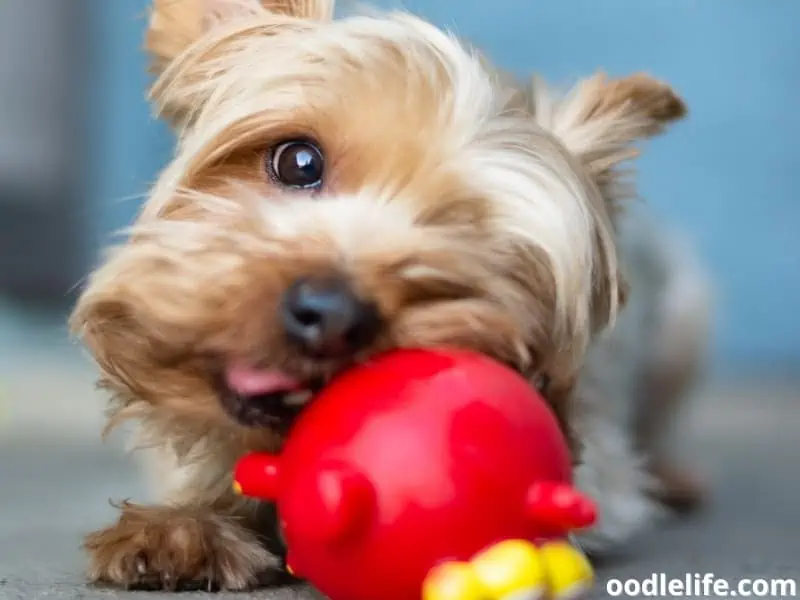
Consider a Diet Change
If you’re wondering how to get rid of puppy breath, you might need to make a few changes to your pet’s diet.
Table scraps, especially meat, can get caught in your puppy’s teeth and cause bacteria and bad breath to develop. Feeding bones can also lead to bad breath since they can splinter, resulting in small pieces getting stuck between your puppy’s teeth and damaged gums that can become infected.
Dogs with food sensitivities or food allergies also often develop bad breath since they can’t digest their food properly. If your puppy’s food is the root cause behind their bad breath, you’ll probably see other symptoms such as inflamed skin, hair loss, vomiting, diarrhea, gas, and more.
Another possible reason for bad breath is switching to soft canned food. While some dogs can benefit from eating soft food, soft food can get stuck between your pet’s teeth more easily.
If you suspect that your puppy’s diet is causing their bad breath, you should discuss your options with your vet. Your vet will recommend a hypoallergenic diet to see if your puppy’s symptoms improve if they suspect that your pet has a food allergy.
Your vet can also help you weigh the pros and cons of soft food compared to kibbles to determine which option is best for your dog.
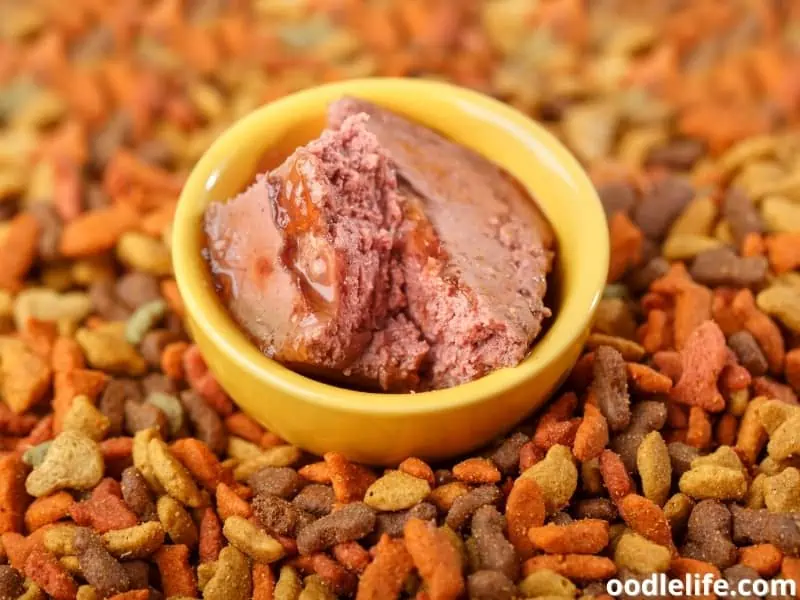
Schedule a Dental Cleaning
Dental cleaning is an essential part of your dog’s oral hygiene regimen, especially as your pet gets older.
Dogs need a dental cleaning procedure once a year or once every two years. Typically, you’ll want to schedule your dog’s first dental cleaning once they reach two or three years, but you can take your puppy earlier if they have plaque buildup.
Your vet will put your dog under general anesthesia to scrape the plaque off their teeth. They might perform additional procedures, such as taking X-rays of your pet’s mouth or removing damaged or infected teeth.
You should inspect your puppy’s mouth regularly and watch out for any symptoms of infection or tooth decay. You’ll typically see red and swollen gums, visibly damaged or cracked teeth, or discoloration. You should schedule a dental appointment as soon as possible to have your vet address these oral health issues before they worsen.
Adopting an oral care routine at home can help you manage periodontal disease and delay dental cleaning, but you should schedule these appointments regularly as your pet gets older.
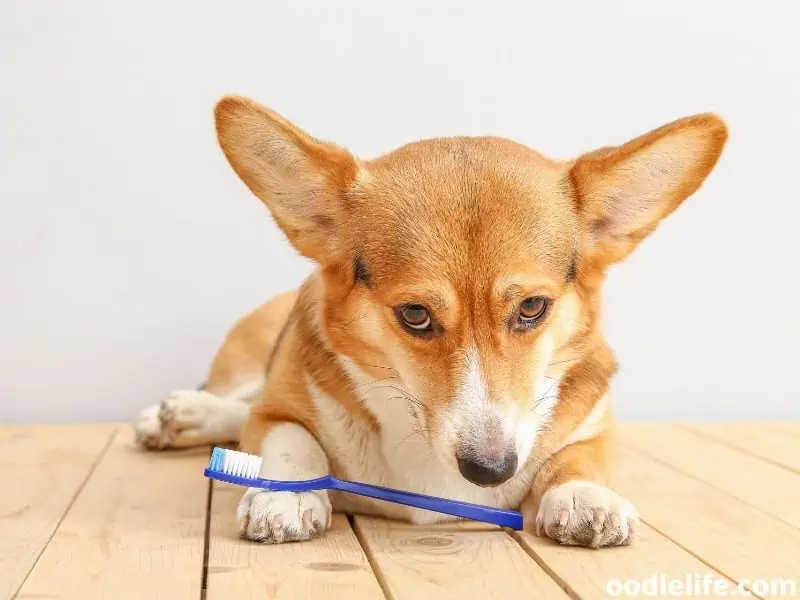
Final Thoughts
Now that you know how to get rid of puppy breath, you can start taking steps to improve your pet’s oral health. Dental disease is typically not an issue in puppies, but adopting good habits now, such as brushing your dog’s teeth daily, can prevent plaque from forming and help your pet maintain healthy teeth during their entire life.
Bad breath is something you should bring up during your next vet appointment to get personalized oral health recommendations for your pup!